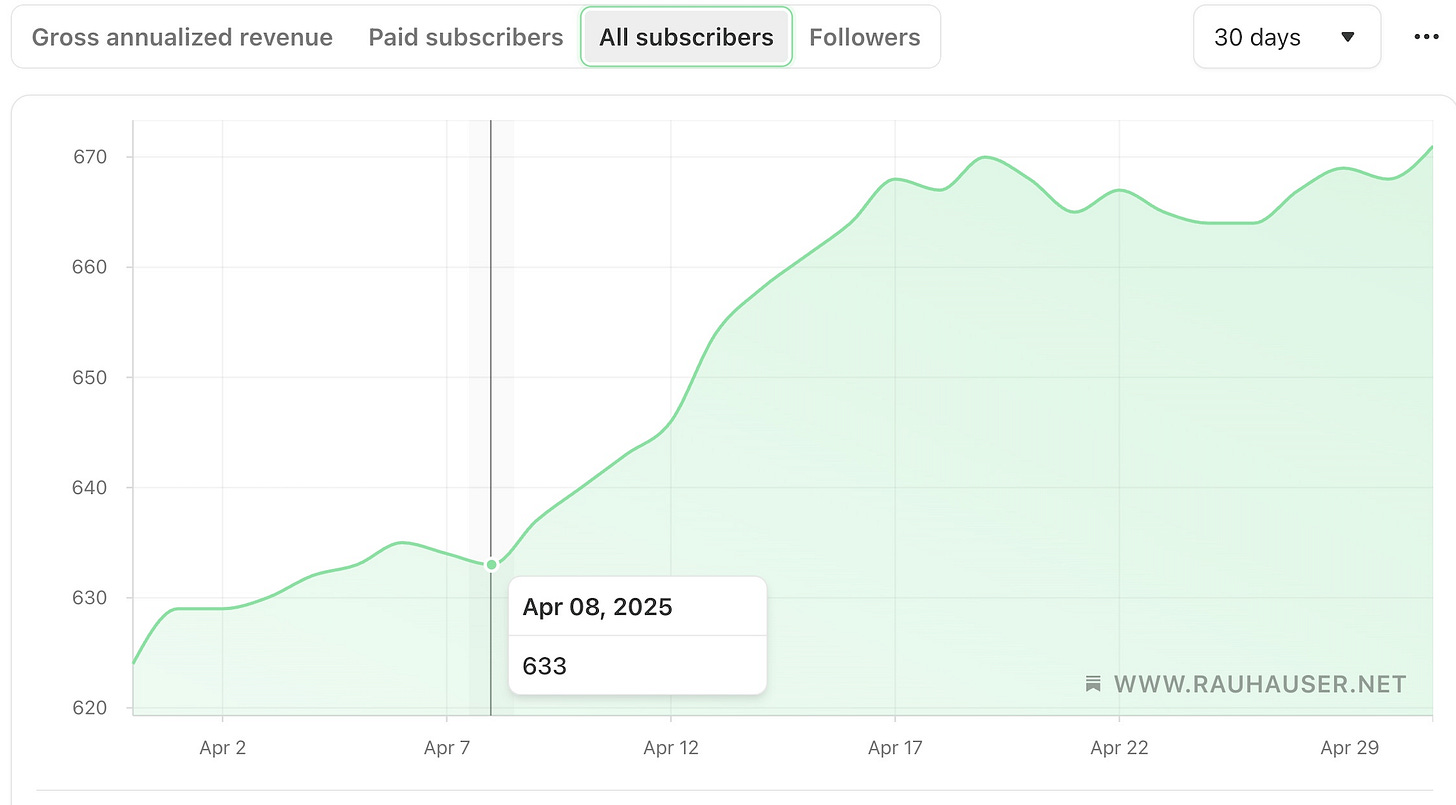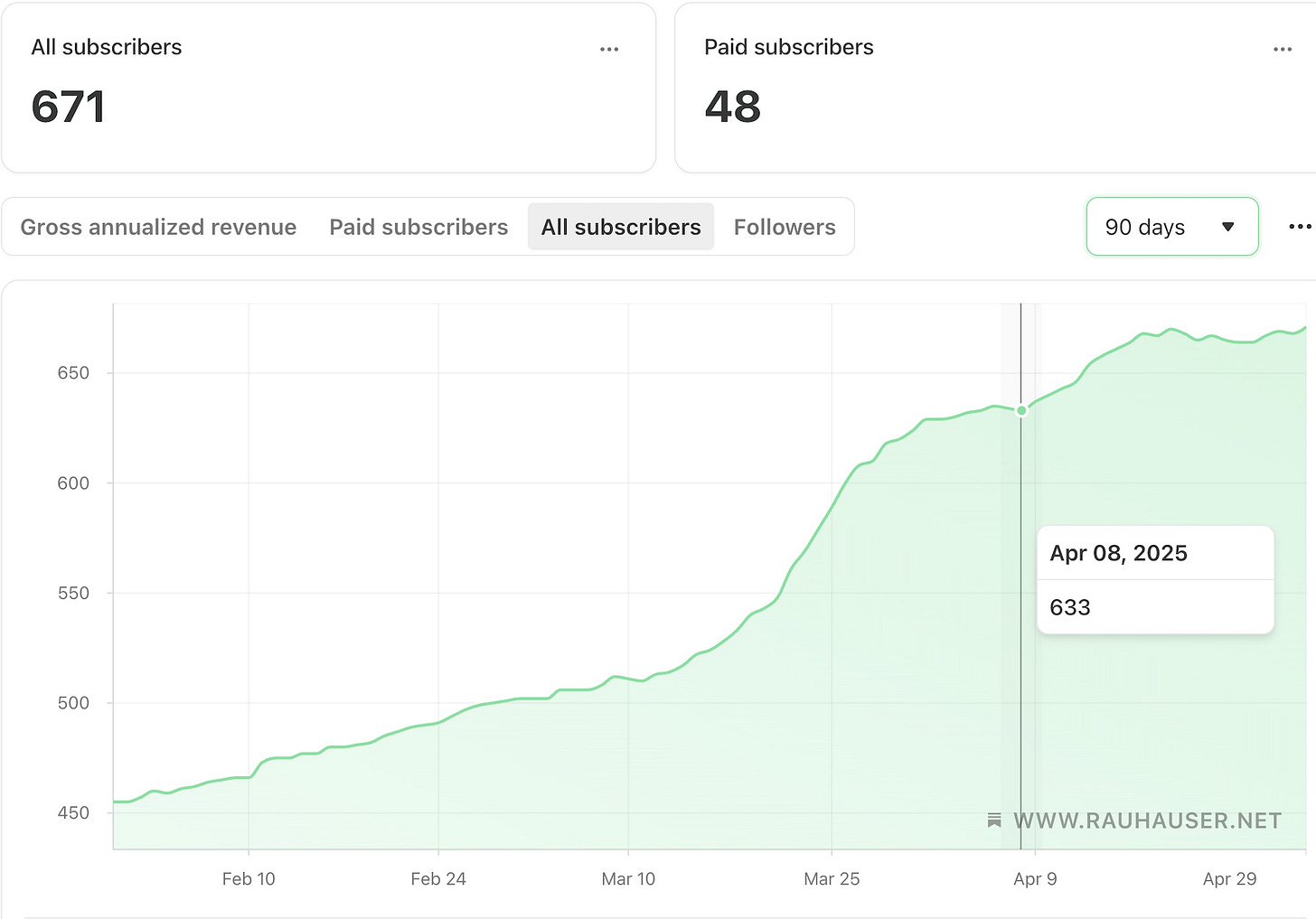About That Beneficial Botnet
Three weeks since I opted out of it.
Three weeks ago in Begone Beneficial Botnet I made a change intended to limit a seemingly helpful botnet, but one that was boosting foreign policy related posts, perhaps in an attempt to lead me away from the focus of this Substack.
Let’s have a look at what’s happened since then.
Attention Conservation Notice:
Bored network analysis guy waiting on a long install process decided to look at metrics. If you’re not a Substack metrics geek, you should flee immediately.
Graphs:
Here’s the total traffic for this site, followed by the Substack only. Someone has mastered the API. The precipitous drop in activity coincided with my manually removing every artificially boosted post from the top posts that follow each article. I’m not sure if it’s a general purpose botnet focused on foreign policy stuff, or if this was an intentional effort to lead me astray.
Before you roll your eyes and start sending me Reynolds Wrap sponsored YouTube videos on blocking psychotronic radiation, I have seen stuff like that done, in particular to a certain attention aficionado who recently got in srs bsns trouble.
Here’s what happened to subscriber counts as seen from both 30 and 90 day samples. That steep rise in the 90 day graph is the botnet arriving, the steep rise in the 30 day graph … I guess a change in strategy by the botnet operator?
And here’s follower counts in the same timeframe. See the change in slope in late March in the 90 day graph? That’s the botnet arriving. The prior linear increase over time jibes with my long term observations of the system.
The spike in followers in mid-April seems like it might be a botnet strategy shift, but then it fades. My organic articles get a dozen likes when they’re popular, the botnet boosts an article to around 200 likes, then picks another one to elevate. So I think we’re dealing with a fleet of perhaps 200 to 300 bots, or a subset of a larger botnet that’s receiving partial tasking. The scope of the non-boost related activity makes me think it’s probably the former - 200 nodes passing beneath Substack’s radar, make it big enough to come to their attention, then it’ll get smacked.
Conclusion:
I used to stream Twitter activity at scale. During the 2019 El Paso Walmart shooting the system caught ten million tweets in an hour. Musk’s purchase of Twitter was the beginning of the end and the cancellation of API access two years ago this month was the final blow.
There is a Substack API but last I knew it’s non-published. I messed with it a little bit, but the network analysis I’ve done here has been all manual. I crawled a network of six dozen actual humans doing substantive writing back in the fall of 2023 when I got active here, haven’t done much else since. If you read Responsible Social Media, my article on Anders Puck Nielsen’s take on such things, you’ll recognize that Substack qualifies as well run.
Depending on what happens work wise in May, I could end up putting some significant time into ArangoDB’s LLM + Knowledge Graph. If I get back into the mode of ArangoDB, Python, and Gephi, it’s likely I’m going to have a go at characterizing the botnet more fully.
I don’t like this. Dead Internet Theory is just a conspiracy theory at this point, but there is a kernel of truth to the notion that the internet of humans has been replaced by AI manipulation. I can tell it’s about time to revisit Simulacra & Simulation.








